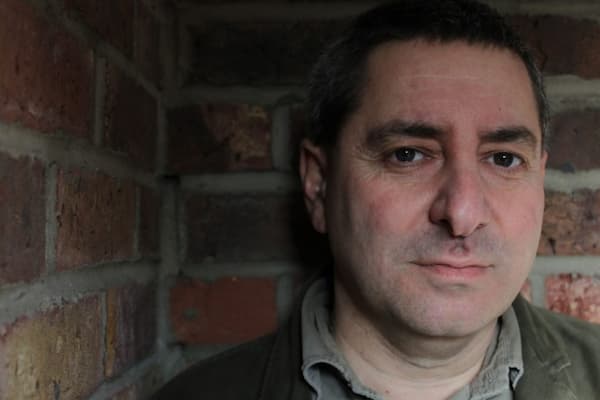Today, the classical music scene is much more diversified and not limited to only Western traditional instruments. In this article, two Hong Kong-born composers, Hong Hong Gianakon and Kwan Leung Ling, share their journeys as composers and their works using both Chinese and Western instruments.
Would you like to give a brief introduction of yourself?
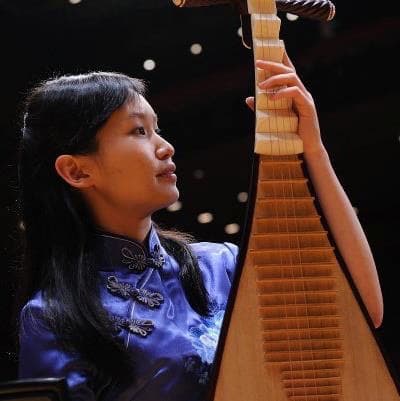
Hong Hong Gianakon playing the pipa
Gianakon: I am a composer, pipa performer, and music teacher. I was born and raised in a musical family in Hong Kong. My mom was my first music teacher, who taught me how to play the piano when I was 3. My grandfather was a renowned Cantonese opera singer in Hong Kong in the 50s. My strong interest in music led me to pursue my bachelor’s degree in music at Hong Kong Baptist University in 2007, majoring in traditional Chinese music study. After graduation, I started composing music that blends Western and Chinese musical elements. In 2012, I moved to the U.S. to further my study in music. I got admitted into the master’s program at Northern Illinois University, majoring in music composition. Upon graduation in 2014, I moved to Kansas City to start my doctorate in music composition, together with a master’s degree in music theory at University of Missouri-Kansas City. I graduated in 2018. During my last decade in the U.S., I have been actively introducing traditional Chinese music to American audiences.
Three Portraits of Pipa (2018) by Hong Hong Gianakon – I. Sparkling Crystal
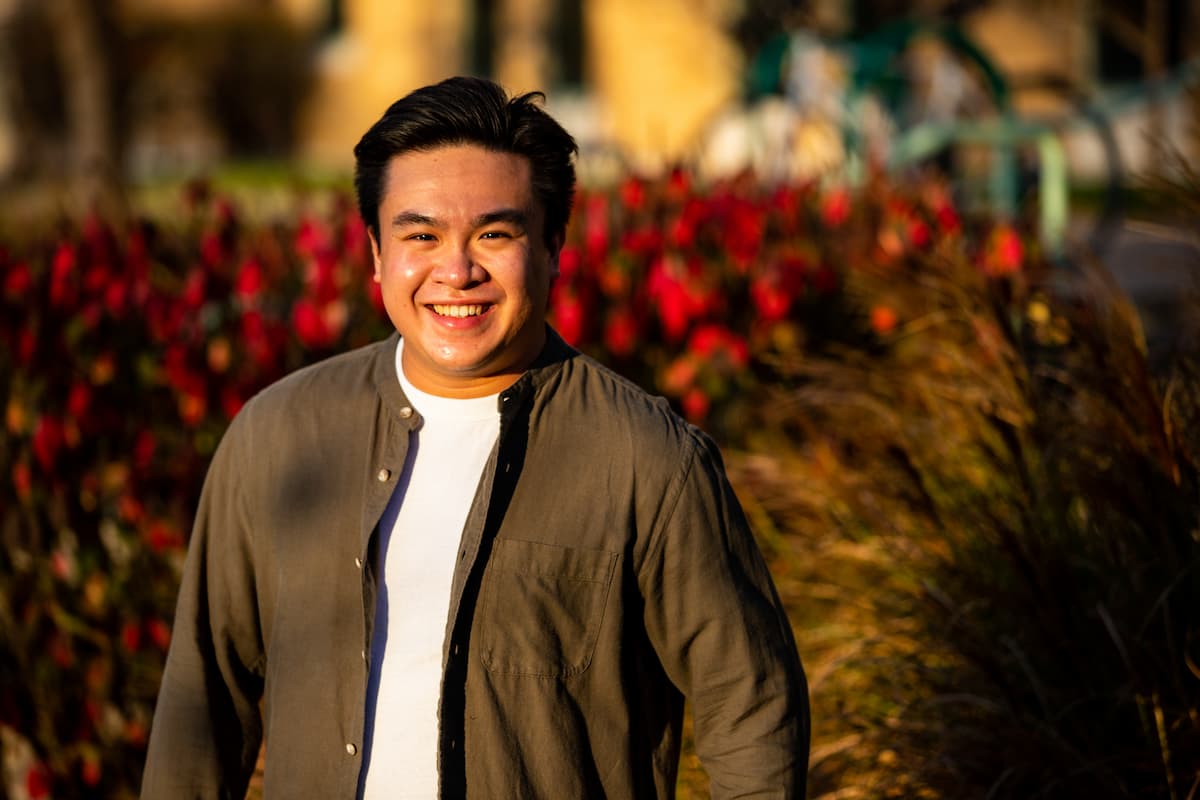
Kwan Leung Ling
Ling: I am Kwan Leung LING, a composer and performer born and raised in Hong Kong. My instrument is suona, a traditional Chinese double reed instrument. My musical style is influenced by my national identity and upbringing. Hong Kong is a city bursting with international life and color. My music concerns itself with finding varying fusions between multicultural music styles and searching for the connection between sounds.
Compromising (2018) for Dizi and String Quartet by Kwan Leung Ling
What instruments (Chinese/ Western) do you play?
Gianakon: Piano, violin, pipa, ruan, erhu, mandolin, banjo, guitar, bass guitar, and oud (middle Eastern plucked-string instrument)
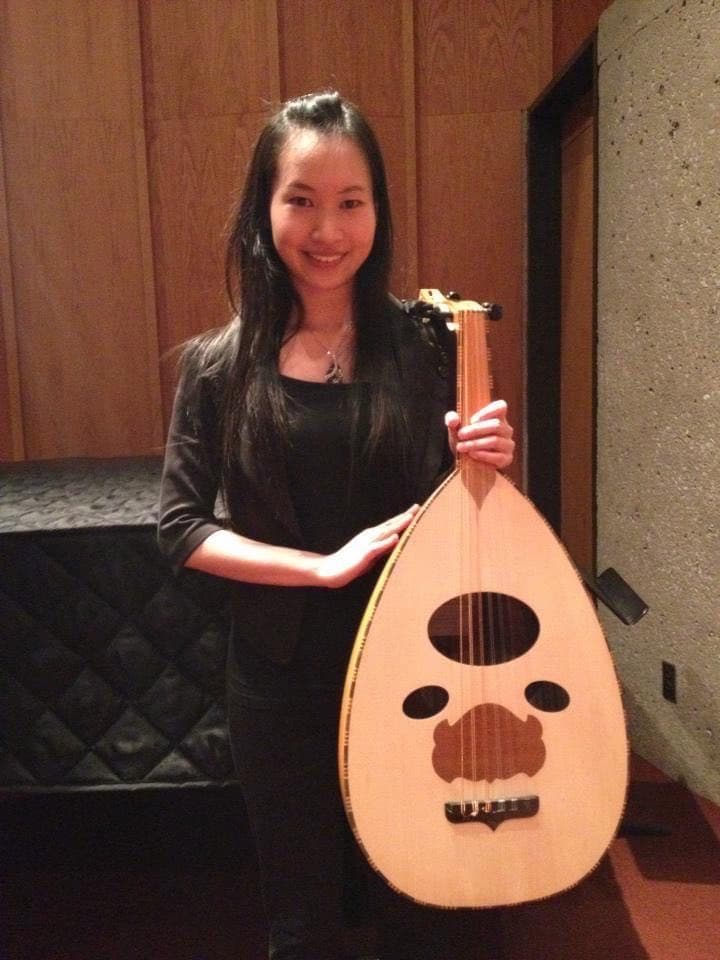
Hong Hong with her oud
Ling: Suona, Guanzi and Bili
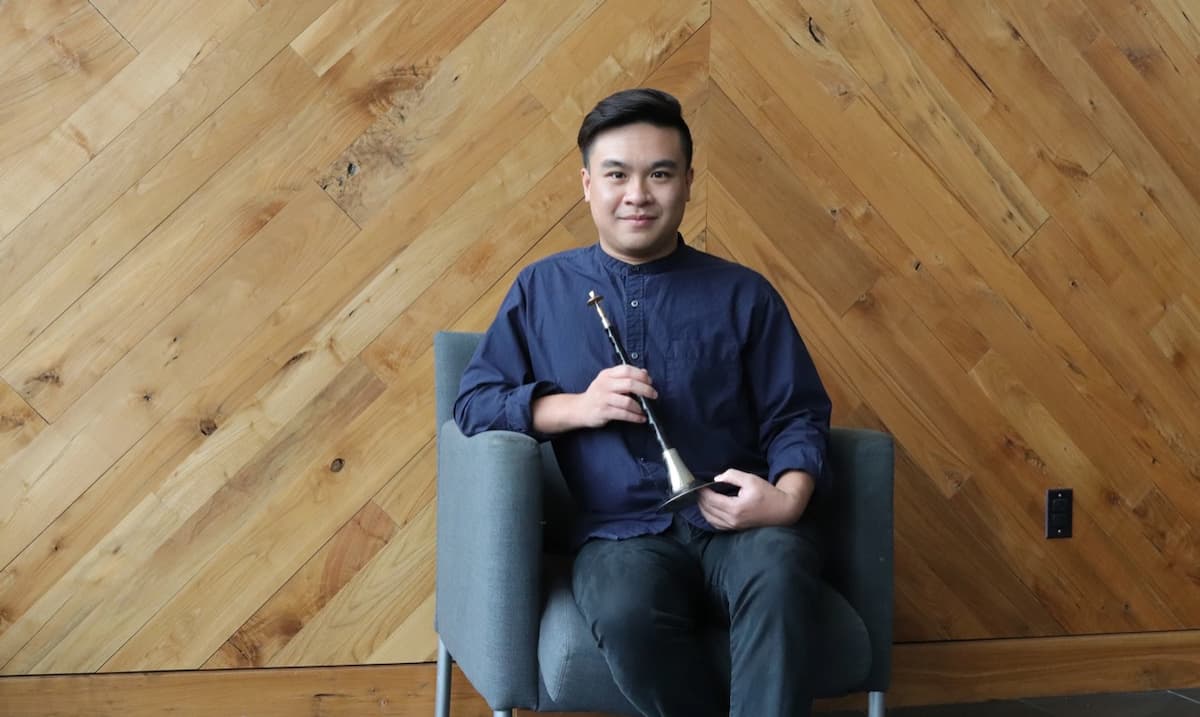
Kwan Leung Ling with his suona
What are the inspirations behind writing music using Chinese and Western instruments? When did you start having this idea?
Gianakon: Growing up playing the pipa, piano, and violin, I have been surrounded by traditional Chinese music and Western music since a young age. Being musically bilingual, I have naturally developed an interest in writing music that combines the two cultures. When I was a music student at Hong Kong Baptist University, I joined the Feng Consort, a newly founded Chinese music ensemble dedicated to performing contemporary Chinese music and collaborating with Western music ensembles. In 2011, I was given an opportunity to write my first fusion composition for Feng Consort and Collegium Musicum Hong Kong for their East-West Encounter concert series, directed by Prof. Johnny M. Poon. My journey as a fusion music composer started there.
Dragon Dance – For Solo Pipa, Strings, Winds, and Percussion by Hong Hong Gianakon
Ling: I think writing music using both Chinese and Western instruments together has been an idea imprinted on my compositional soul since I first started to learn suona. I think piano accompaniment for recitals is a tradition in the musical world, and Chinese instruments also follow this tradition. The image of suona and piano, or even Chinese instruments in general with piano is a standard in my mind. That might be the reason why I do not think having both of the instruments together is a strange idea. Moreover, it is a challenge to find Chinese instrumentalists in the United States. Mixed instrumental ensembles are second nature to me since I want to write music that I can play together with my friends, and I think it works pretty well and is fun.
Compromise (fusion) by Kwan Leung Ling
What are the difficulties of incorporating Chinese instruments in a Western orchestra? And perhaps vice versa?

Pipa © philadelphiachineseacademy.com
Gianakon: Some of the biggest challenges when it comes to incorporating Chinese and Western musical instruments in the same composition are handling the differences in temperament and stylistic interpretation. Some traditional Chinese musical genres that still exist today, such as Cantonese music and Chao Zhou music, use scales outside the 12 equal temperament. Western musical instruments are not built to play these scales. When it comes to incorporating musical elements from these genres into my compositions involving both Chinese and Western instruments, it is simply impossible to make the Western instruments play “in tune.” The same struggle happens when having the Chinese instruments play the equal-tempered Western scales. I think the solution is not to try to have all instruments pick a side. Instead, have the instruments do what they do best and preserve the uniqueness and beauty of the timbre of the instruments by giving them different roles (melodic, harmonic, textural, etc.) in the compositions. Another challenge is to precisely notate some stylistic ornamentations from some of the traditional Chinese musical genres. When I was still taking pipa lessons, I came across traditional pipa pieces from various genres. Each genre has a specific and precise way of handling pitch bending, one of the very distinctive features of traditional Chinese music. I specifically remember how my teacher demonstrated the technique through playing it to me and singing it. Yet, in my music, it was nothing more than just a slur with an arrow connecting the starting note and the bent note. It doesn’t indicate how fast or slow the pitch bending should be. Ironically, it is the different speed of doing that that differentiates one genre from another. The same struggle can be seen when it comes to trying to include and notate a specific, stylistic ornamentation in the compositions and to introduce it to musicians from other cultures.
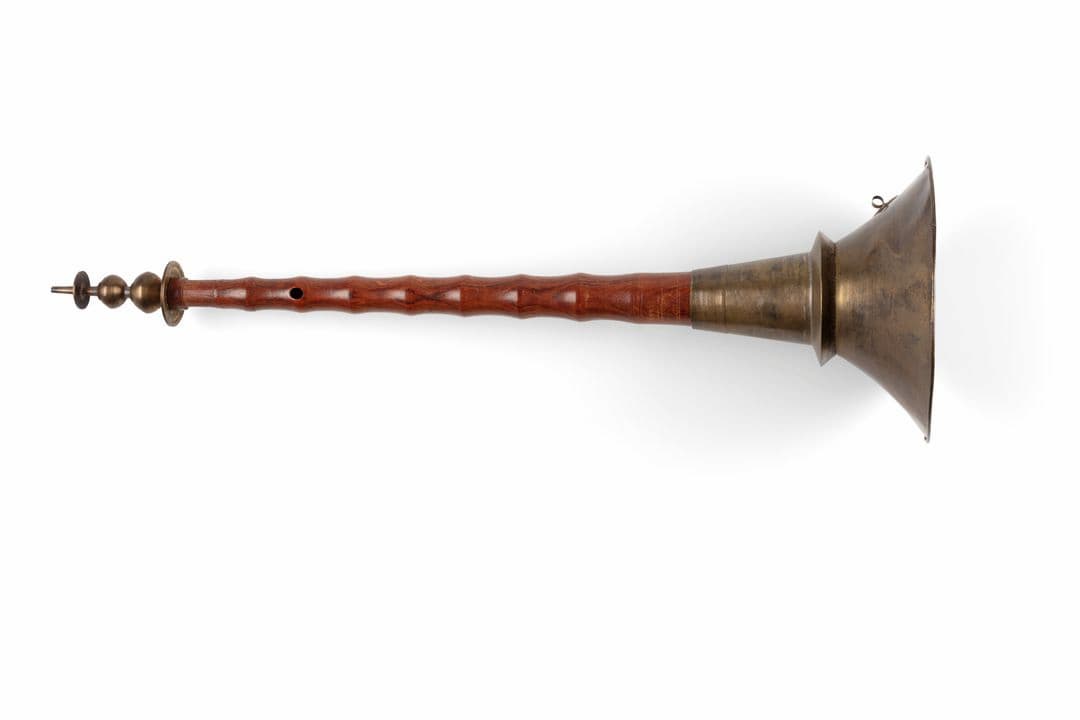
Suona © collection.maas.museum
Ling: I think musical practice is an interesting element. Chinese instrumentalists learn music by ear, although the musical score exists. We would look at the score during the lesson but catch up on the ornaments and un-notated rhythm by ears. It is from the tradition of aural skills that Western notation is too square and cannot capture all the micro rhythm and pitches, at the same time, improvisation is an important part of Chinese traditional music. Therefore, we need to reserve musical space for the Chinese instrumentalists to express their creativity via the written music, and I got into deep planning of the intonational progression, also the character of the instrument.
Organic Geometry II (2019) by Kwan Leung Ling
What are your latest composition(s) and your latest project (s)?
Gianakon: My latest composition is a commission by newEar Contemporary Chamber Ensemble, written for pipa, violin, viola, cello, and piano. It was premiered by the ensemble in December 2022 and was broadcasted on the classical music radio station in Kansas City in February 2023. You can listen to the radio episode.
Ling: The principal suona of Hong Kong Chinese Orchestra — Wai Him Ma will be premiering my piece Snowflower for suona and electronic. The premiere will be at 8:30 pm HKT in the Theatre, Hong Kong City Hall, on May 31st.
Snowflower is a piece for suona and fixed media, meant to convey an impression of the memories the composer has of Chinese Opera from his childhood. The television in the morning always brought out a familiar sound, a humble melody resonating in the mother tongue. Serving as a projection between traditional and modern electronic sounds, Snowflower is a reflection on memory, with the sound forming an image for the audience.
For more of the best in classical music, sign up to our E-Newsletter

